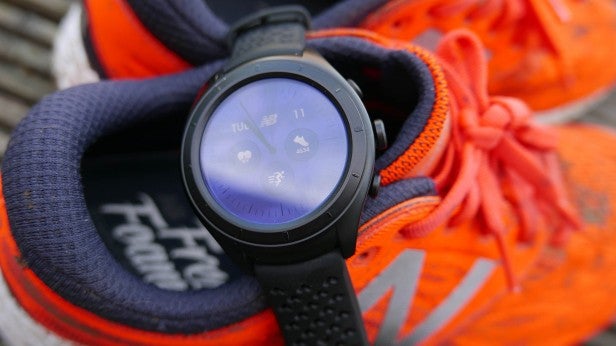New Balance RunIQ Review - Performance and sports tracking, battery life & verdict Review
Performance and sports tracking, battery life & verdict
A big sporting brand delivers a disappointing wearable
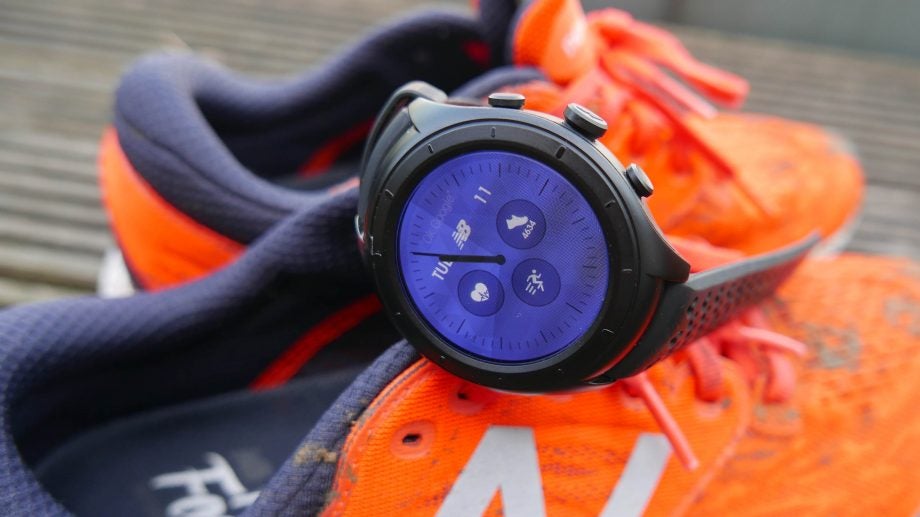
Sections
- Page 1 New Balance RunIQ Review
- Page 2 Performance and sports tracking, battery life & verdict Review
New Balance RunIQ – Performance and sports tracking
In order to get the New Balance RunIQ up and running, you’ll need to install no short of three separate apps, which makes for a rather convoluted setup. You’ll need the Android Wear app, par for the course, but also the New Balance app and Strava as well.
The latter makes sense, considering the selling point is the Strava integration. In fairness, I’m a big fan of Strava and consider it one of the best apps for tracking runs. But the New Balance app is barebones when it comes to interacting with the RunIQ. You have the ability to customise watch faces and the metrics displayed when running, but that’s about it.
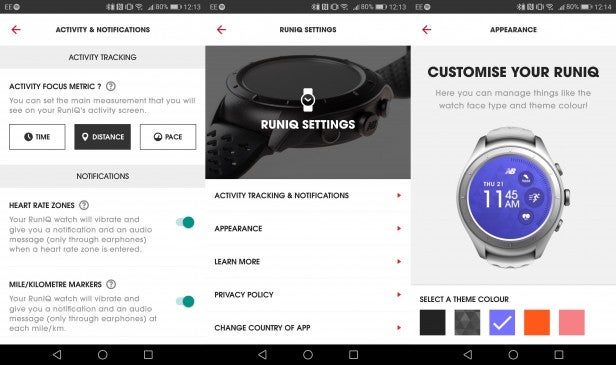
An earlier version of the New Balance app also served to force New Balance apparel in front of your eyeballs, like a glorified catalogue app. Intriguingly, this doesn’t seem to be the case any more with the app redirecting straight to the watch settings interface instead. As the app serves multiple purposes, one of which being as a catalogue of sorts, I imagine that content is still tucked away somewhere as the app download itself is still a reasonably large 75MB.
As for the performance of the RunIQ watch, there’s an Intel Atom Z34XX chip paired with 512MB of RAM providing the grunt work. This is supported by 4GB of included storage, although some of that is already occupied by Android Wear.
The main issue is that the RunIQ currently runs on Android Wear 1.5, not the new and shiny Android Wear 2.0 you see included out of the box from other recent releases such as the LG Watch Sport or Huawei Watch 2.
In fairness, Android Wear 2.0 is coming to the RunIQ, and apparently imminently. But for the purpose of this review, I’ve been using the RunIQ for the past few weeks on the older version. Needless to say, going back to the Android Wear of old feels jarring to say the least.
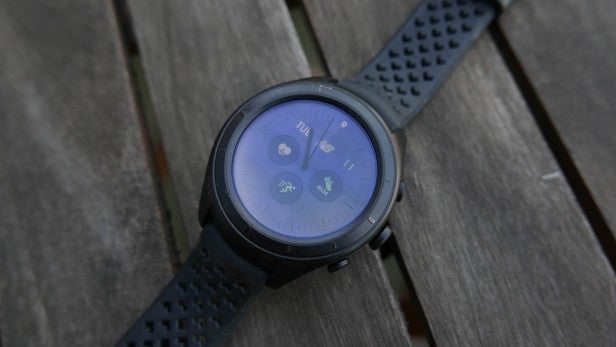
Android Wear 2.0 has brought with it a number of refinements you only really miss once they’re gone. Notifications are much better handled in 2.0, not only in how they’re presented but also how you engage and interact with them. Then you’re losing out on other new aspects like the direct access to the Google Play Store from your wrist to install apps directly and better customisable watch faces. Not ignoring that shiny new Google Assistant, too.
But really, it’s not just the older version of Android Wear that’s a sticking point. It’s how sluggish the RunIQ can feel at times when running it. Those quick shortcuts to Google Play Music app or Strava tracking just aren’t very quick at all.
There’s a noticeable delay in firing up said apps, made to appear even worse by a black screen wipe animation that leaves the display blank for a good two or so seconds before the apps open. Initially in that interim period before you realise, you’re left wondering if the watch has crashed. It’s the same when firing up any other app, too, whether that be something simple like the Calculator or something more complex like Google Maps.
Whether or not the update to Android Wear 2.0 will fix the performance remains to be seen. I’ll update this review if the update finds its way to my device.
So what of the New Balance RunIQ’s Strava-powered run tracking? A press of the previously mentioned shortcut button takes you to the RunIQ’s tracking app and, after waiting for a GPS lock, you’re ready to head off for a run.
Related: Best fitness tracker roundup
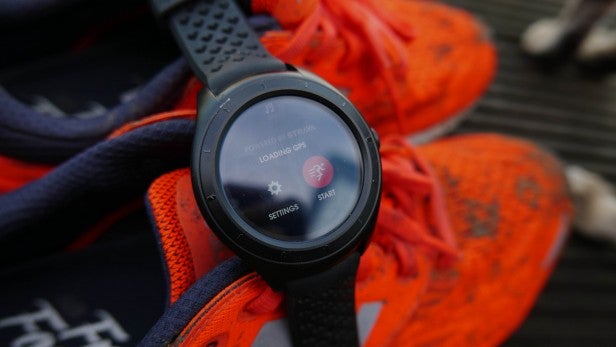
For those not wanting to be inundated with options before setting off, you’ll be pleased to find things are kept incredibly simple. There are only a few settings available to you from the wrist app, letting you switch between running and cycling and turning on or off the auto-pause function for when you’re forced to remain stationary, such as at traffic lights. Finally, the only other option is to switch between imperial or metric units.
As for obtaining a GPS lock, this can take a bit of time depending on your location. You can either wait for the watch to tell you it’s got a lock before you depart, or you can just hit Start and begin running and the watch will attempt to get a lock as you go rather than forcing you to wait like with the TomTom Spark 3. Confusingly, even though the watch app might imply it has a GPS lock by telling you to hit Start, it might still be looking for upwards of another minute.
By swiping horizontally between screens once you do begin a run, you can swap between different screens showing distance/time, heart rate including heart rate zone, cadence and lap time. The bottom watch button also acts as an easily accessible lap button during a run. Swiping down brings up music controls for whatever you have playing on your phone or directly on the watch.
Across the screens, that’s most of the information people will want while on the move. The only problem being that the display can be tough to read outdoors as I mentioned. Remember to knock up the brightness all the way before you start running unless you want to clumsily fumble with the watch as you go.
The run tracking using GPS performed as I would expect and there weren’t any major discrepancies versus the GPS in my phone. Heart rate monitoring, on the other hand, wasn’t as rosy a picture.
While steady-state jogging garnered generally consistent results, often times within 3-4 BPM of a Jabra Elite Sport in my ear, and on a separate occasion a Moov HR on my head, its performance when really taxing your cardiovascular system was less than stellar.
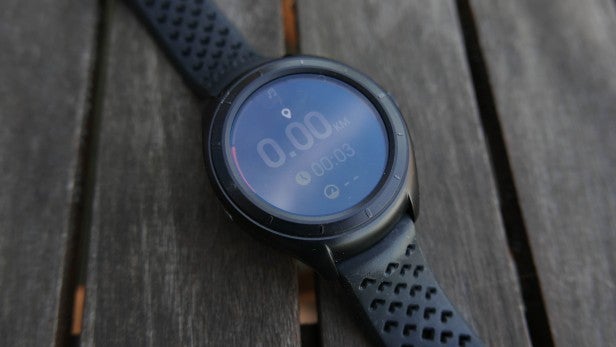
Any sprints or quick deviations in intensity caused it to either take an age to update its heart rate reading, or to throw in wildly erroneous maximum heart rate readings as high as 10 BPM away from the control heart rate monitors, or worse, just jumping between two wildly deviating results. I could go from 86 BPM to 160 BPM following a 30 second sprint.
Considering this is an area of importance for anyone serious about their training, this is rather disappointing, even when keeping in mind I’ve generally been underwhelmed by other optical heart rate monitors in the same scenarios. I couldn’t trust the results the heart rate monitor was giving me.
The Strava integration isn’t even that big a selling point, either, as the Strava platform can pull in running data from elsewhere anyway. Then, with Android Wear 2.0, you could always install the dedicated Strava app directly on your smartwatch, making it somewhat of a non-point.
Related: Best Headphones for Running
I also encountered a few bugs during the weeks of testing, with a few runs failing to log properly, one of which was even at a hands-on event that included a short run. Sometimes the watch will refuse to get a GPS lock, forcing you to restart the watch.
Other times, even though the watch would be tracking the run correctly, including showing distance and other metrics, afterwards it wouldn’t save because it allegedly didn’t have enough GPS data points even though it clearly did.
New Balance RunIQ – Battery life and charging
Unlike the raft of other new Android Wear 2.0 watches that are boasting two-day battery life, the New Balance RunIQ struggles to make it over the finish line of a single day. With GPS and heart rate monitoring happening, you’re looking at around 5 hours of continuous run time.
So if you’re running a marathon, you might have to forget about any smartwatch use during your marathon cool down unless you carry the charger. This is around the same as what you get from the Polar M600 in terms of stamina at least.
The charger is magnetic and as far as chargers go, it’s one of the better ones with a solid attachment and no worries about it coming loose. It doesn’t prop the watch up as a bedside clock, which would have at least been useful considering you need to charge the watch overnight.
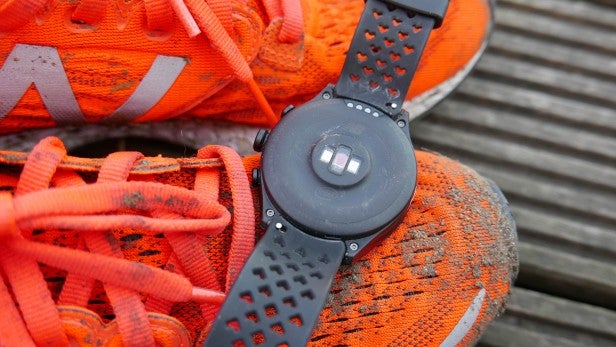
One issue I think is worth mentioning is that on a few occasions, I’ve managed to open up the RunIQ tracking app by accident during the day, which has then turned on the GPS. But having exited the app, the watch has kept location services turned on, which has absolutely decimated the battery life.
On the main watch face a pin icon shows up when location services are activated, but if you don’t notice it’s very easy to suddenly go to use the watch only to find it dead. I found I had to reboot the watch entirely if it got caught in this permanently on GPS mode as well. This could be a bug that gets fixed when Android Wear 2.0 rolls out. At least I hope so anyway.
Should I buy the New Balance RunIQ?
While the New Balance name, one synonymous with running, might lead you to believe this will be a watch that runners would love, the RunIQ is incredibly disappointing. It’s a solidly constructed running watch, yes, with a design that doesn’t exactly break the mould but also doesn’t offend the eye.
But its shortcomings when it comes to battery life, display and, most importantly, some poor heart rate monitoring leaves it as an also-ran. Then there are the bugs I encountered that round off a disappointing running watch. It is also priced surprisingly high at around £325. Strangely, it’s only $300 in the US, which is marginally more palatable but ultimately still not great all things considered.
For less money I’d still put the Polar M600 ahead, even if its design is inferior, if you’re looking for a running specific watch loaded with Android Wear as a bonus (Android Wear 2.0 is also coming as a future update). It’s a much better performer. Then there’s the recent Huawei Watch 2, which is the slight inverse, getting a lot of the smartwatch side right but with decent sports tracking thrown in.
Unfortunately, like the Under Armour Healthbox before, slapping a well-known name on a product doesn’t guarantee a stellar result.
Verdict
The New Balance RunIQ has too many shortcomings to be the ultimate running smartwatch including unreliable heart rate monitoring and a raft of bugs.


